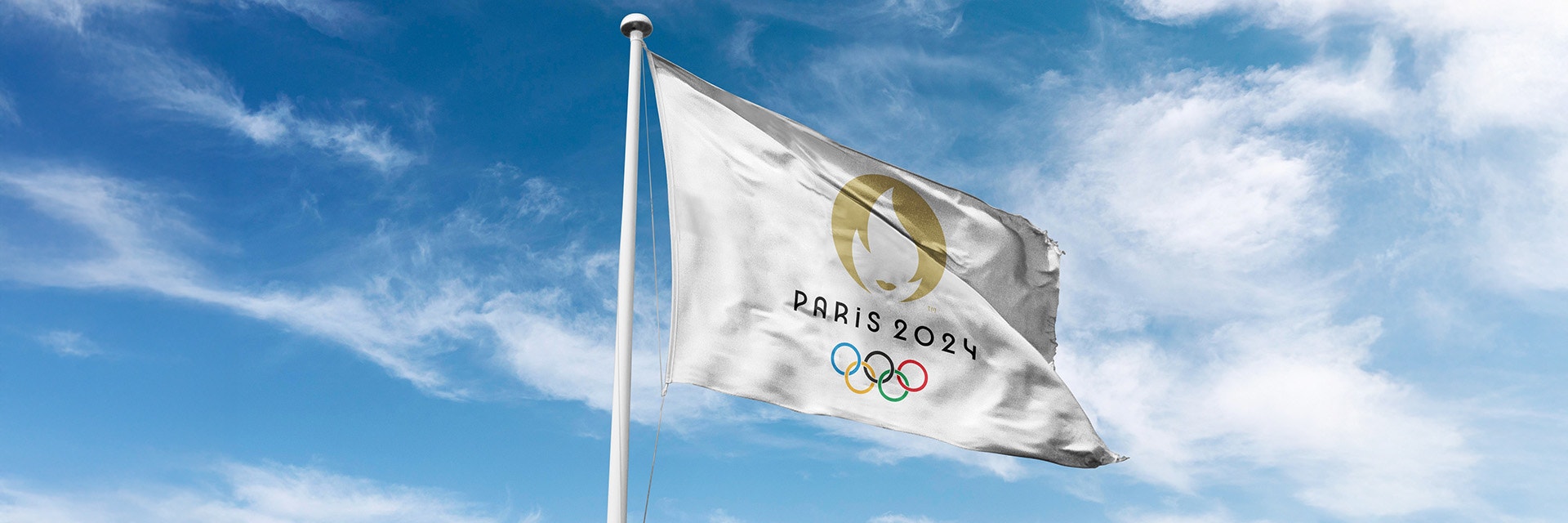CASE STUDY
Faster, Higher, Stronger — Together. How Trentino Sviluppo, 3D Printing, and e-Stage for Metal+ Helped Italian Sailing Pair Win Olympic Gold
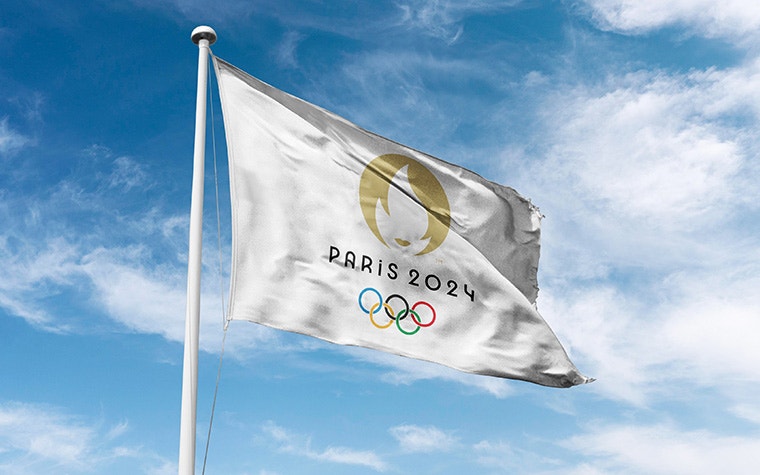
Ruggero Tita and Caterina Marianna Banti raise the Italian flag in triumph. The smiling pair made history at the Paris 2024 Summer Olympics, cruising to victory in the Nacra 17, mixed multihull sailing Regatta. Grit, determination, and skill put them on the right track for success, along with engineering support from Trentino Sviluppo.
The business development and innovation company in the Trento Province collaborated with them to design around 40 customized 3D-printed parts for their winning catamaran. However, their bespoke, lightweight pulley system was the standout component.
Using additive manufacturing (AM) support generation software, they iterated and produced the final part at speed, shrinking its form factor by 60% compared to the original. As a result, AM gave the dynamic pair a competitive edge, helping them gain a first-place podium finish.
Challenge
Redesign and develop a bespoke, lightweight pulley system quickly for the Olympics
“I received a call from Ruggero the day after he [and Caterina] won the World Championship in August 2023. We discussed different ways to improve for the upcoming Olympics based on the new rule changes initiated for the games in Paris,” says Ciro Malacarne, Additive Manufacturing R&D at Trentino Sviluppo S.p.A. “That’s not a lot of time as you can imagine, less than a year in fact,” he recalls.
However, Ciro and Trentino Sviluppo are used to challenges and thinking of viable solutions for these high-pressure sports. The company supports elite athletes in the Trentino region and has worked with the Italian duo since 2018 using AM parts. But this assignment was different.
“Ruggero and Caterina wanted a new pulley that was lightweight, corrosive resistant — due to the salty seawater environment — and easily serviceable,” says Ciro. “Their catamarans are very complex and difficult to sail. They’re foiling boats, which are like airplanes over the water.”
New design class rules for the event stated that certain parts of the boat could be modified. And one such example was the pulley system. It’s a key component connected to the catamaran’s mainsail and is vital for adjusting the sail, maneuvering the boat precisely, and controlling its speed and direction. With this knowledge in tow, the Olympic pair saw a golden opportunity to redesign the part.
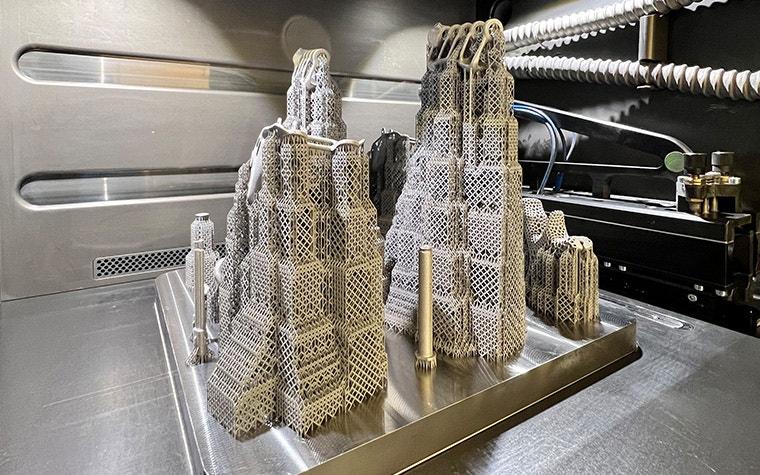

“They [Ruggero and Caterina] chose to focus on that piece of equipment because it was an important, heavy piece they were allowed to modify. Essentially, all competing boats are based on one design, meaning that most of the parts, like the hull, mast, sail, and foil, must be equal for everyone. However, some bits of the boat can be adjusted and fitted with custom parts. If you can balance the weight and performance of these parts, you’ll be able to create a big advantage,” explains Ciro.
By making the pulley system lighter and more aerodynamic, the team could redistribute the boat’s weight by moving it to other areas of the catamaran. This lowers its center of gravity, increases maneuverability, and maintains stability.
“Weighing the boat — reducing the boat's weight while moving heavier parts to other areas — can stop the boat keeling over and help teams gain a significant competitive advantage, as these crafts are narrow dynamic platforms,” states Ciro. “The original pulley system was comprised of around ten commercial parts and was rather heavy. So, we decided to go with a blank slate for this project.” The only requirement was that this redesigned component be smaller, more integrated, and custom-made.
The Olympic team wanted a tailor-made piece to fit the specific scenario of the boat and application. “Our goal was to improve wind resistance, minimize drag, and reduce the time needed for serviceability. These athletes don’t have huge teams with them, so the part had to be robust, easy to clean, and open. Ruggero and Caterina should be able to rest and remain focused on winning the next race, not worry about equipment failure.”
With this in mind, the team used 3D printing to trim their sails and found solace using a new type of metal automation software.
Solution
Titanium pulley system, design for additive manufacturing, and e-Stage for Metal+
Based on the criteria, Ciro and the pair started the groundwork. “Ruggero has an engineering degree, so he was fully involved and surprised by the different technologies on offer,” says Ciro. First, sensors were placed on the boat to analyze maximum loads, drag, wind strength, and other factors. Tests were carried out during training sessions on Lake Garda, which is close to Trentino Sviluppo’s lab ProM Facility. Next, the team analyzed the data collected during these sessions to create computational fluid dynamics (CFD) and finite element analysis (FEA) models using nTop and Ansys software.
Afterward, a 3D model of the boat was developed with computer-aided design (CAD) software, including the simulated and optimized pulley system on board. “We would maintain a continuous feedback and improvement loop with them,” explains Ciro. “This meant we could optimize the component and iterate for things like optimal topology and max load in the CAD before doing the heavier and more time-consuming printing and post-processing stages.”
After a short deliberation, the team decided to use grade 23 Titanium for the component’s structure due to its mechanical performance, corrosion resistance, and ease of printing. But the real magic came from a combination of our Pre-Print Software. “We used Magics for printing; however, the real game-changer for us was the e-Stage for Metal+ module. Our objectives were leveraging AM’s capabilities and generating a unique shape for the pulley, but we thought we’d need a lot of post-processing based on this ambitious target. Not with e-Stage for Metal+,” enthuses Ciro.
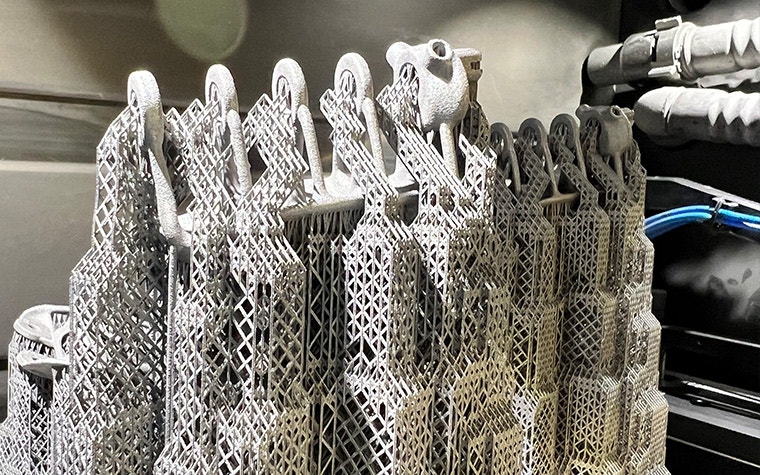

The team knew that AM was the ideal route because of its speed, flexibility, design freedom, and ability to minimize costly iterations. They contemplated using traditional block supports to carry out their complex designs. However, after further investigation and a meeting with one of our software experts, they found that e-Stage for Metal+ was the perfect candidate.
“Ciro spoke to one of my colleagues about this project, and he mentioned it to me,” says Ian O'Loughlin, Metal Technology Practice Lead at Materialise Software. “It just so happened that I was in Italy for another engagement, so I decided to pop down to Trentino Sviluppo's office for a quick chat. After talking with Ciro, I quickly realized that automation found in e-Stage for Metal+ would be a great solution for their project.”
The team did several trials with the tool, building a few parts and supports to see its capabilities, but soon realized that the module was more than worthy. “After a few results, we went super aggressive, printing extremely complex parts. e-Stage for Metal+ printed our parts first time right,” smiles Ciro.
“They really went for it,” agrees Ian. “What impressed me the most was that they had the self-assurance to put a massive pile of parts on the build platform, which showcases their confidence in e-Stage for Metal+’s ability to get the job done and print right the first time. This shows the power of automation software and its impact on users, regardless of experience level.”
e-Stage for Metal+ allows users to automatically generate support and place cones in their build to significantly reduce dross formation, mitigate excessive stress, and minimize any possible deformation.
“The real game-changer for us was the e-Stage for Metal+ module. [...] I estimate post-processing would have taken us three times as long without it.”
— Ciro Malacarne, Additive Manufacturing R&D at Trentino Sviluppo S.p.A
Ciro completed the design and iteration stage within a few weeks, with minimal gaps in between, thanks to e-Stage for Metal+’s automated support generation, printing accuracy, and reduced post-processing time. “We printed four different versions before reaching the final version. Imagine the post-processing time it would have taken if we went for traditional block supports. This tool analyzes and tackles all surfaces that need support — even the bits that are easy to forget,” says Ciro.
The software also has additional benefits for the user and the 3D printer. As e-Stage for Metal+ creates minimal but very robust and thin, open support structures, it’s easier for the user to remove these supports by hand or using small hand tools.
“There’s a massive difference. We no longer require mechanical or heavy tools during post-processing. Recoating is smoother, meaning less wear and tear on your equipment and build plate. Plus, there isn’t excess powder trapped on the build plate, which is better for us health and safety-wise,” explains Ciro.
Residual powder during thermal treatment can lead to hazardous semi-sintered solid metal powder. This is mitigated with e-Stage for Metal+, as the open structure allows operators to clean the build plate effortlessly. “Heat accumulation was also lower, resulting in better downskin quality, and e-Stage for Metal+ uses fewer supports on the surface, which is easier to remove, meaning a smoother finish compared to traditional block support. I estimate post-processing would have taken us three times as long without it,” declares Ciro.
Result
Faster design iterations and post-processing, resulting in an integrated pulley system that’s 50% lighter
The design, iteration, and production processes took around 9 months. “We started around a month after our first call and provided the prototype in April 2024. The redesigned pulley and other custom AM parts were completed in June — a few months before the games began,” says Ciro.
The new, integrated AM-inspired pulley system was a marvel of ingenuity. The team managed to shrink the volume by approximately 60% and achieved a total weight saving of almost 50%.
“It would have been impossible to achieve the same results with traditional manufacturing techniques. This complex metal part was designed with AM in mind. I chose 3D printing from day one because it offers the perfect blend of speed, design flexibility, and cost. Casting is extremely expensive and rather prohibitive for this project. The design and iteration phase may have been hindered because of the time it takes to cast, resulting in fewer iterations and higher costs. Not to mention, the continuous feedback and improvement loop we implemented with the team, is simply a no-go with conventional manufacturing techniques,” states Ciro.
“We’re using the software [e-Stage for Metal+] for many projects, and I personally use the tool for everything I can. 90% of the parts I work on go through it.”
— Ciro Malacarne
As time was of the essence, AM became the only viable option. But it was also the right one. With their catamaran in tow and ready for action, Ruggero and Caterina competed in Paris 2024, achieving stunning results. They gained back-to-back Olympic gold following their 2020 victory in Tokyo.1 And the two athletes are now Italy’s greatest Olympic sailors of all time.2
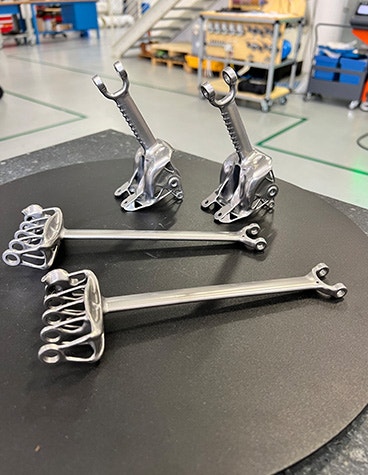
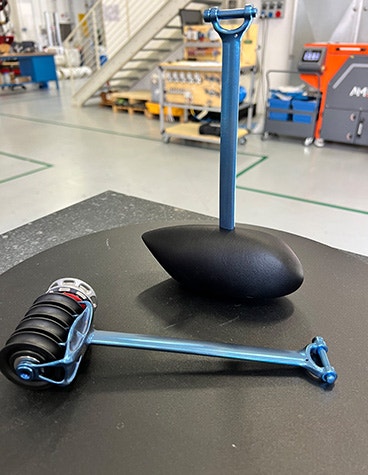
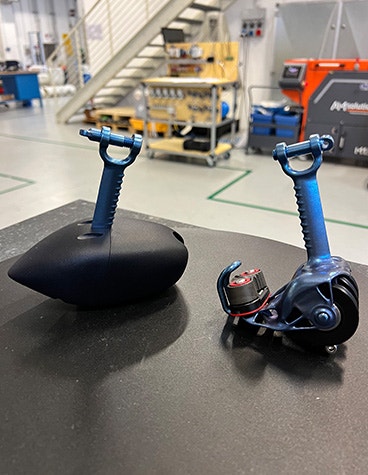
The pair were not the only ones to receive critical acclaim. Their pulley system and other AM parts, like the trapeze cleat, received admiring glances from fellow competing sailors. “Some rivals were wondering, ‘What is that thing [trapeze cleat] on the side of the boat?’ It’s much smaller than ours.’ And even the commercial pulley system manufacturers were impressed with our AM design. Because of Ruggero and Caterina’s victory, they decided to go back to the drawing board of their own design,” beams Ciro.
What’s next for Ciro, Trentino Sviluppo, and the winning pair’s relationship? Shortly after being named team of the year,3 Caterina retired from the sport as a living legend.4 Yet Ruggero is looking to continue to fill his medal cabinet.
“They have won four World Championships, four European Championships, and two Olympic gold medals,” lists Ciro. “Ruggero wants to continue, so he’ll be competing in the America’s Cup and SailGP, which is Formula 1 for sailing. And the next Olympics in Los Angeles, of course,” he smiles. “As for me, I’ll continue testing different metals with e-Stage for Metal+. We’re using the software for many projects, and I personally use the tool for everything I can. 90% of the parts I work on go through e-Stage for Metal+.”
AM changed the face of Olympic and professional sailing, giving the Italian team a competitive edge. Hopefully, Ruggero will continue using customized AM parts in his catamaran and continue his medal haul. It won’t be plain sailing for him, but he knows that Ciro and Trentino Sviluppo will do everything they can to help him succeed and carry the Olympics motto: ‘Faster, Higher, Stronger — Together.’5 How? By coming up with novel ways to use AM to fulfill his ambitions. And e-Stage for Metal+ will be there every step of the way.
Share on:
This case study in a few words
- Automotive
- Machinery & equipment
- e-Stage for Metal+
- Magics
- Titanium (Grade 23)
- Metal 3D printing (metal powder bed fusion)
- PA 12
- Faster design iterations
- Greater flexibility and design freedom
- Automated metal AM support generation
- Thin support structures reduce post-processing time and heat accumulation
How we helped
Automatically generate metal support structures to reduce human error and save time during build prep and support removal.
Improve production efficiency, automate repetitive tasks, and optimize print success rates with industry-leading data and build preparation software.
